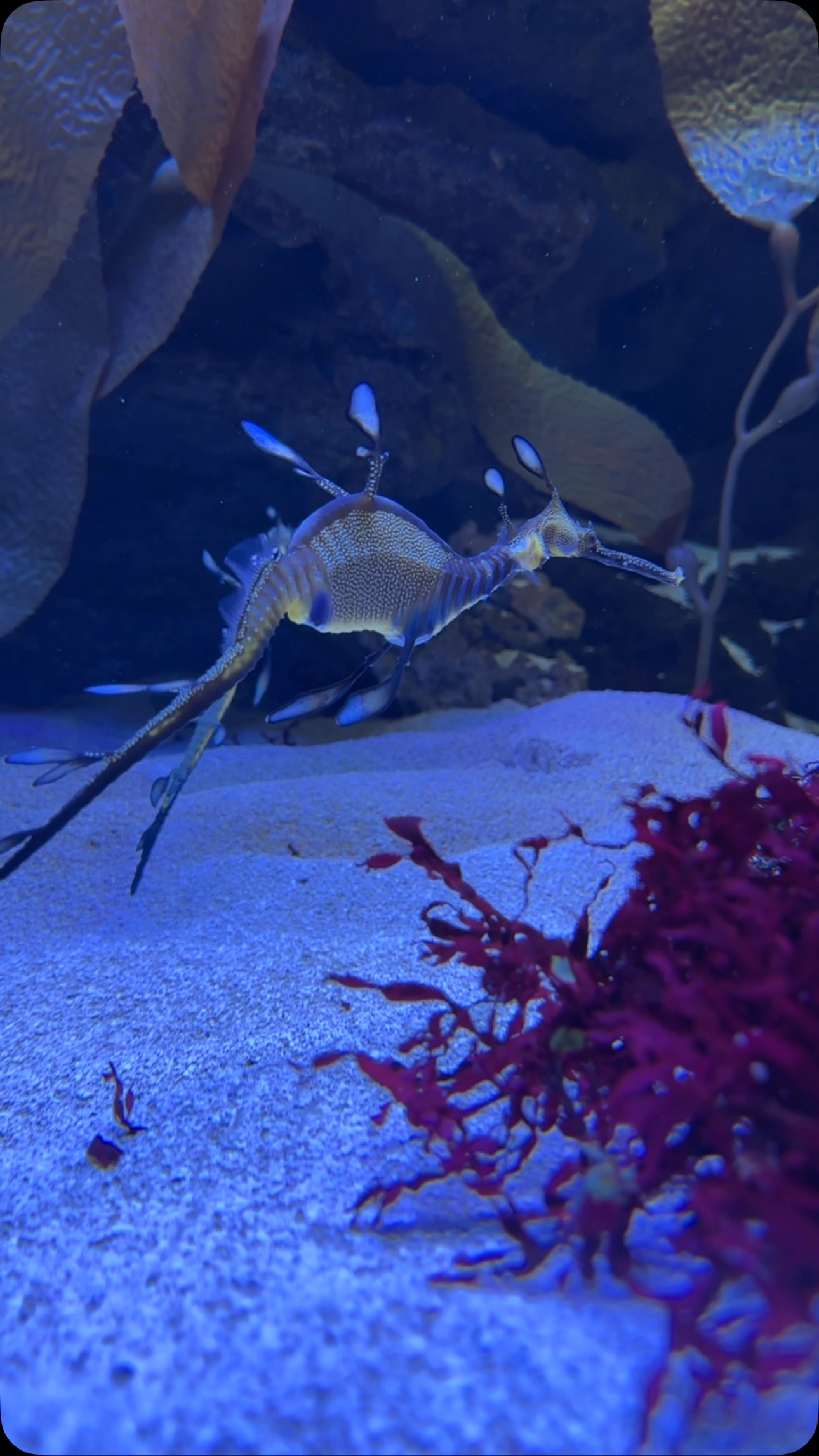- The unique adaptation of Weedy sea dragons for camouflage and survival in their natural habitat.
- Understanding the physiology and anatomy of Weedy sea dragons, including their locomotion mechanisms.
- The role of Weedy sea dragons in marine ecosystems and their importance in biodiversity.
- Conservation challenges faced by Weedy sea dragons and strategies for their protection.
- The role of zoological institutions in Weedy sea dragon conservation and public education.
Weedy sea dragons (Phyllopteryx taeniolatus) are spectacular marine creatures known for their exceptional ability to blend seamlessly with underwater vegetation. Possessing an intricate body structure, these fascinating fish leverage their apperance as a strategic advantage, allowing them to evade predators by resembling floating seaweed. This natural camouflage is vital to their survival in the bustling marine environment.
Weedy sea dragons use minuscule fins to navigate the ocean currents. Located on their necks and backs, these fins propel, steer, and enable agile movement within their aquatic home. However, they tend to drift with the water current most of the time. The gentle, undulating motion doesn’t give away their position, rendering them practically invisible to many predators. Such adaptations are crucial for evasion in environments where hiding places can be scarce, and survival hinges on an ability to remain concealed.
An integral part of their physiological design, the Weedy sea dragon’s movement is not one of speed but of subtlety. Unlike some of their marine counterparts, they do not rely on rapid propulsion but rather on intricate, fluid motion. Their ability to hover and slow glide complements their need for stealth. The transparency of their pectoral and dorsal fins contributes to this, reducing shadow and enhancing mimicry. It is a clear testament to nature’s ingenuity, showing how evolution has tailored each detail for optimal survival.
Weedy sea dragons play a crucial role in maintaining the balance of their ecosystems. As part of the larger marine community, they help control the populations of smaller organisms, indirectly supporting the health and vitality of the underwater habitat. These interactions form a web of life, highlighting the intricate connections within marine ecosystems. Each species, including the Weedy sea dragons, contributes to biodiversity, which in turn supports ecological resilience.
Biodiversity holds intrinsic value to the global environment. The presence of Weedy sea dragons can be seen as an indicator of ecosystem health, as their survival depends on clean and functional marine environments. Conservationists regard these fish as symbols of the delicate interdependencies within oceanic systems. Protecting them, therefore, is part of a broader effort to conserve marine biodiversity.
Yet, Weedy sea dragons face significant conservation challenges. Habitat degradation, climate change, and pollution pose ongoing threats to their survival. Incorporating protective measures such as marine sanctuaries and pollution control is critical to addressing these challenges. Conservation agencies advocate for these strategies to safeguard not only the species but also the ecosystems they inhabit.
In addition, education is a potent tool in their conservation. Public awareness can be dramatically increased through targeted campaigns that highlight the significance of Weedy sea dragons, not only in the ecosystems but also in cultural heritage. As symbols of Australia’s marine life, promoting understanding of their role and the threats they face can drive community engagement and action.
Zoological institutions have taken on active roles in these efforts. By facilitating captive breeding programs, zoos and aquariums aim to bolster Weedy sea dragon populations while simultaneously serving as educational hubs. These programs provide insight into their life cycle and behaviors, which can inform conservation strategies. Through partnerships and collaborations, institutions are working to develop and implement strategies that support the preservation of these remarkable creatures.
Interactive exhibits and educational programs engage visitors with the complexities of marine life, fostering a deeper appreciation and responsibility towards conservation. By translating scientific information into captivating stories and exhibits, institutions not only enhance public knowledge but also inspire future generations to become stewards of the ocean. These educational initiatives are vital, ensuring sustained interest in oceans and their majestic inhabitants.
Further research is another cornerstone in the conservation of Weedy sea dragons. Researchers focus on genetics, ecology, and behavior to gain insights into their ecosystem roles and responses to environmental changes. Such studies are critical for developing informed conservation plans to prioritize efforts where they are most needed. Scientific data are used to inform policy decisions and inspire innovations in habitat restoration and management strategies.
As climate change continues to assert pressure on marine environments, ongoing adaptation of conservation strategies is necessary. This adaptation includes enhanced marine protected areas, stricter regulations on pollution, and increased international cooperation. Efforts like these align towards ensuring sustainable use of marine resources and protection of vital species such as the Weedy sea dragon.
In terms of international efforts, cooperation across borders is essential. The conservation of Weedy sea dragons echoes larger global concerns regarding marine biodiversity. International frameworks support sustainable management of aquatic resources, emphasizing the need for a sound balance between human activity and nature conservation.
Ultimately, the story of Weedy sea dragons is one of impressive adaptation and pressing necessity for conservation. Their existence is a reminder of the beauty and fragility of marine life, and a call to action. By appreciating the intricacies of their lives and taking concrete conservation actions, humanity can ensure the survival of these unique marine creatures for future generations to admire and learn from. The Weedy sea dragon is more than an emblem of the sea; it is a critical player in the ocean’s interconnected tapestry, deserving our attention and efforts.
*****
Source Description
Weedy sea dragons use tiny fins to slowly propel, steer and turn, but they mostly drift in the water’s current 🌊🐉. This makes them look like floating seaweed to predators.


